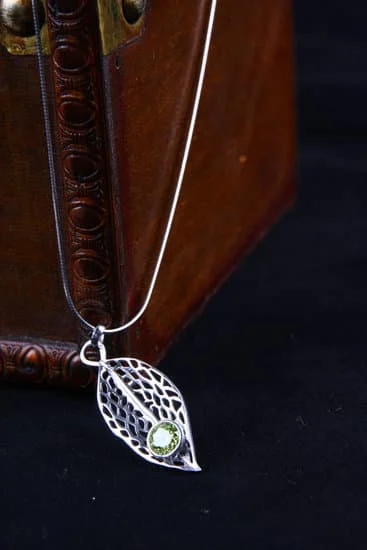Bali, a picturesque island in Indonesia, is renowned for its rich culture, stunning landscapes, and exquisite traditional jewelry. The history of Bali jewelry dates back centuries and holds a significant place in Balinese culture and heritage. From intricate designs to meaningful symbols, Bali jewelry reflects the island’s deep-rooted traditions and influences.
The ancient origins of Bali jewelry can be traced back to the early civilizations that flourished on the island. Influenced by Hinduism and local animistic beliefs, Balinese jewelry making has evolved over time, drawing inspiration from various cultural influences and traditions. The techniques and materials used in crafting these timeless pieces are a testament to the island’s dedication to preserving its heritage.
In this article, we will delve into the fascinating history of Bali jewelry, exploring its ancient origins, traditional techniques, iconic designs, and its enduring significance in Balinese culture. We will also uncover how contemporary trends have influenced the evolution of Bali jewelry over the years, cementing its enduring legacy in the world of artisanal craftsmanship. Join us on this captivating journey through the world of Bali jewelry as we unravel its cultural significance and timeless beauty.
The Ancient Origins of Bali Jewelry
Bali has a rich and ancient history of jewelry-making that dates back centuries. The art of jewelry making in Bali is deeply rooted in the island’s culture and traditions, with techniques and designs passed down through generations. The history of Bali jewelry can be traced back to the island’s early inhabitants and their interactions with different cultures and traditions.
The ancient origins of Bali jewelry can be linked to the Majapahit Empire, an influential Hindu-Buddhist kingdom that once ruled over Indonesia. This empire had a significant impact on the cultural and artistic development of Bali, including the art of jewelry making. Balinese artisans were influenced by the intricate designs and symbolic motifs from the Majapahit era, which are still evident in contemporary Bali jewelry.
Another key influence on the ancient origins of Bali jewelry is the arrival of Indian traders to the region. The exchange of ideas, materials, and techniques between Indian artisans and Balinese craftsmen contributed to the development of unique styles and forms in Bali jewelry. This cross-cultural exchange laid the foundation for the distinctive aesthetic that defines Balinese jewelry today.
The ancient origins of Bali jewelry also reflect the island’s natural beauty and spiritual beliefs. Many traditional Balinese designs are inspired by nature, such as motifs representing flowers, leaves, or animals. Additionally, religious symbols from Hindu mythology often feature prominently in Bali jewelry, reflecting the island’s strong connection to spiritual practices. These influences continue to shape Bali jewelry making today, honoring a legacy that has endured for centuries.
| Aspect | Data |
|---|---|
| Ancient Influence | Majapahit Empire |
| Foreign Influences | Indian traders |
| Inspiration for Designs | Nature and spirituality |
Influences and Traditions in Bali Jewelry Making
Bali has a rich history of jewelry making that dates back centuries. The influences and traditions in Bali jewelry making are deeply rooted in the island’s cultural and artistic heritage. Balinese jewelry is known for its intricate designs, attention to detail, and use of traditional materials.
One of the earliest influences on Bali jewelry making dates back to the ancient kingdoms that once ruled over the island. The Majapahit Empire, which peaked in the 14th century, had a significant impact on the art and culture of Bali, including jewelry making. This influence can still be seen in the traditional motifs and designs used in Balinese jewelry today.
Another important influence on Bali jewelry making comes from Hinduism, which was introduced to the island around the 1st century CE. Hindu deities and symbols are often featured in Balinese jewelry, reflecting the island’s strong spiritual traditions. This has contributed to the unique visual language of Bali jewelry, with intricate carvings and ornate detailing inspired by Hindu mythology.
Traditional Balinese jewelry is also influenced by the island’s natural beauty and environment. Materials such as silver, gold, precious stones, coral, and pearls are commonly used in Balinese jewelry making. These materials not only reflect the natural resources found on the island but also hold cultural significance in Balinese society.
| History Influences | Significance |
|---|---|
| Majapahit Empire | Ancient motifs and designs |
| Hinduism | Inspired by spiritual traditions |
| Natural beauty | Use of local materials with cultural significance |
Balinese Jewelry Techniques and Materials
Bali has a rich and diverse history of jewelry making that dates back to ancient times. The techniques and materials used in creating Bali jewelry have been passed down through generations, resulting in the exquisite and intricate pieces that are highly sought after today.
Ancient Techniques
The art of jewelry making in Bali can be traced back to ancient times, with techniques such as granulation, filigree, and repoussé being widely practiced. These techniques require great skill and precision, and are still used by Balinese artisans today. Granulation involves fusing tiny metal beads onto a metal surface to create elaborate patterns, while filigree involves intricate wirework to form delicate designs. Repoussé is the art of creating relief designs on metal by hammering from the reverse side.
Traditional Materials
Balinese jewelry is typically made using precious metals such as gold and silver, often combined with semi-precious gemstones such as garnet, amethyst, and turquoise. The use of these materials reflects the cultural and spiritual significance of jewelry in Balinese society. In addition to metals and gemstones, Bali jewelry also features traditional materials such as coral, bone, and wood, which adds a unique element to the designs.
Modern Innovations
While traditional techniques and materials continue to play a significant role in Bali jewelry making, modern innovations have also contributed to the evolution of this art form. Contemporary Balinese artisans are incorporating new materials such as pearls and Swarovski crystals into their designs, resulting in a fusion of traditional craftsmanship with modern aesthetics. Additionally, advancements in technology have allowed for greater precision in creating intricate designs, further pushing the boundaries of what is possible in Bali jewelry making.
The history of Bali jewelry is a testament to the rich cultural heritage of the island, with techniques and materials that have stood the test of time while embracing innovation. The enduring legacy of Bali jewelry continues to inspire designers around the world while preserving its deep-rooted traditions.
Iconic Bali Jewelry Designs and Symbols
Balinese jewelry is known for its intricate designs and rich symbolism, making it truly unique in the world of jewelry. The iconic designs and symbols found in Bali jewelry are a reflection of the rich cultural heritage and deep spirituality of the Balinese people.
One of the most prominent symbols in Bali jewelry is the Barong, a lion-like creature that represents good forces and protects against evil spirits. This symbol is often intricately crafted into pendants, bracelets, and other pieces of jewelry, serving as a powerful talisman for its wearer. Another popular design is the motif of the lotus flower, which holds deep spiritual significance in Balinese culture. The lotus is often depicted in various forms, symbolizing purity, enlightenment, and rebirth.
In addition to these symbols, Bali jewelry also features elaborate filigree work, granulation, and traditional Balinese motifs such as swirls and waves. Each piece of jewelry is meticulously handcrafted by skilled artisans using techniques that have been passed down through generations.
The history of Bali jewelry can be traced back to ancient times when goldsmithing and silversmithing were highly esteemed crafts in Bali. Influences from Hinduism, Buddhism, and indigenous Balinese beliefs have contributed to the unique designs and symbols found in Balinese jewelry. These influences continue to shape the evolution of Bali jewelry today, merging traditional techniques with modern styles to create timeless pieces that hold both cultural significance and aesthetic appeal.
Evolution of Bali Jewelry Over the Years
The history of Bali jewelry is a rich tapestry that dates back centuries, with influences from various cultures and traditions. Over the years, Bali jewelry has evolved in both design and techniques, reflecting the changing times and the merging of old traditions with new trends. From ancient origins to contemporary influences, the evolution of Bali jewelry showcases the adaptability and creativity of Balinese artisans.
Throughout its history, Bali jewelry has been shaped by a multitude of influences, including Hinduism, Buddhism, and traditional Balinese customs. The intricate designs and symbols found in Bali jewelry are often reflective of these influences, making each piece a unique representation of the island’s spiritual and cultural heritage. Moreover, the use of materials such as silver, gold, precious stones, and even organic materials like wood or shells further exemplify the diverse range of inspirations behind Bali jewelry.
To understand the evolution of Bali jewelry over the years is to appreciate the craftsmanship and creativity that has defined this art form. From ancient times to modern innovations, Balinese artisans have continued to push boundaries and redefine traditional techniques in their quest for creating timeless works of art.
As we delve deeper into the history of Bali jewelry, it becomes clear that its evolution is not just a reflection of aesthetic change but a testament to the enduring legacy of Balinese culture and artistry.
- The incorporation of designs inspired by nature
- The use of filigree work in Balinese silver jewelry
- The influence of colonialism on Bali jewelry
The Significance of Bali Jewelry in Balinese Culture
In Balinese culture, jewelry holds a profound significance beyond its aesthetic value. Each piece is believed to carry spiritual meaning and provide protection to the wearer. From intricate silver filigree work to traditional gold designs, Balinese jewelry is often adorned with symbols inspired by Hindu mythology and folklore, such as the Barong, Garuda, or Lotus flower.
The craftsmanship and attention to detail in Bali jewelry are also a reflection of the island’s strong connection to nature and spirituality. Balinese artisans draw inspiration from their surroundings, incorporating elements from the natural world into their designs. From organic motifs like leaves and flowers to intricate animal figures, each piece of jewelry tells a story that is deeply intertwined with the island’s cultural identity.
The role of jewelry in Balinese society goes beyond adornment; it is also an important symbol of social status, spirituality, and belief. Whether worn during religious ceremonies or as part of everyday attire, Bali jewelry continues to play a pivotal role in preserving and celebrating the cultural heritage of the island. As time passes, this tradition continues to evolve while maintaining its deep cultural significance.
Contemporary Bali Jewelry Trends and Influences
Contemporary Bali jewelry continues to evolve, influenced by both traditional Balinese designs and modern global trends. With an increasing demand for unique, handcrafted jewelry, Balinese artisans are exploring new techniques and materials while staying true to their cultural roots. Let’s take a closer look at the current trends and influences shaping the world of contemporary Bali jewelry.
Fusion of Traditional and Modern Designs
One of the prominent trends in contemporary Bali jewelry is the fusion of traditional Balinese motifs with modern design elements. Artisans are experimenting with incorporating traditional symbols, such as the Barong, Garuda, or lotus flower, into sleek and minimalist pieces. This blend of old and new creates jewelry that appeals to both lovers of timeless elegance and those seeking a touch of innovative flair.
Sustainable Practices
In response to growing global concerns about environmental impact and ethical sourcing, there is a rising trend in Bali’s jewelry industry towards sustainability. Artisans are increasingly using recycled metals, ethically sourced gemstones, and environmentally friendly production methods. This shift not only reflects a commitment to preserving the natural beauty of Bali but also resonates with conscious consumers who prioritize sustainable fashion choices.
Global Inspirations
Bali’s vibrant arts scene and melting pot culture have made it a source of inspiration for artists and designers from around the world. As a result, contemporary Bali jewelry reflects diverse global influences, from bohemian chic to urban glamor. Artisans often draw inspiration from their interactions with international visitors or collaborations with foreign designers, leading to an exciting fusion of Balinese craftsmanship with global design aesthetics.
The dynamic landscape of contemporary Bali jewelry showcases how the rich history of Bali jewelry making continues to thrive in the modern era through innovation, sustainability, and global interconnectedness. As we delve deeper into this ever-evolving world of adornment, it becomes clear that contemporary Balinese jewelry is not just about wearing beautiful pieces – it’s about celebrating cultural heritage and embracing creativity in today’s interconnected world.
Conclusion
Bali has a rich and vibrant history of jewelry making that dates back centuries. The ancient origins of Bali jewelry can be traced to the influence of various cultures such as Indian, Chinese, and Javanese, which have all contributed to the unique and intricate designs that are synonymous with Balinese jewelry. The techniques and materials used in creating these beautiful pieces have been passed down through generations, creating a legacy that is still celebrated and cherished today.
The significance of Bali jewelry in Balinese culture cannot be overstated. These exquisite pieces are not just accessories but also hold deep cultural and spiritual meaning for the people of Bali. From elaborate earrings to ornate necklaces, each piece is carefully crafted with traditional symbols and motifs that reflect the island’s rich cultural heritage.
As time has passed, the evolution of Bali jewelry has seen a blend of traditional techniques with contemporary influences, resulting in a diverse range of styles that cater to modern tastes while still honoring the legacy of their ancestors. Today, Bali jewelry continues to captivate people around the world with its timeless beauty and craftsmanship.
In conclusion, the enduring legacy of Bali jewelry speaks volumes about the artistry and craftsmanship of the Balinese people. With its ancient origins, cultural significance, and evolving styles, Bali jewelry remains an integral part of Balinese identity and continues to be treasured by both locals and international admirers alike.
Frequently Asked Questions
What Jewelry Is Bali Known For?
Bali is known for its intricate and ornate silver jewelry. Balinese artisans are famous for their craftsmanship and attention to detail, creating stunning pieces inspired by the island’s rich cultural heritage.
Is Bali Jewelry Good Quality?
Bali jewelry is generally considered to be of good quality. The artisans in Bali take pride in their work and often use high-quality materials such as sterling silver and semi-precious gemstones to create beautiful and long-lasting pieces.
Where Is Bali Jewelry Made?
Bali jewelry is made primarily in the villages of Celuk and Singapadu, where generations of skilled artisans have perfected the art of silver and goldsmithing. These traditional craft villages are renowned for producing exquisite Balinese jewelry using age-old techniques passed down through the generations.

Welcome to my jewelry blog! My name is Sarah and I am the owner of this blog.
I love making jewelry and sharing my creations with others.
So whether you’re someone who loves wearing jewelry yourself or simply enjoys learning about it, be sure to check out my blog for insightful posts on everything related to this exciting topic!





